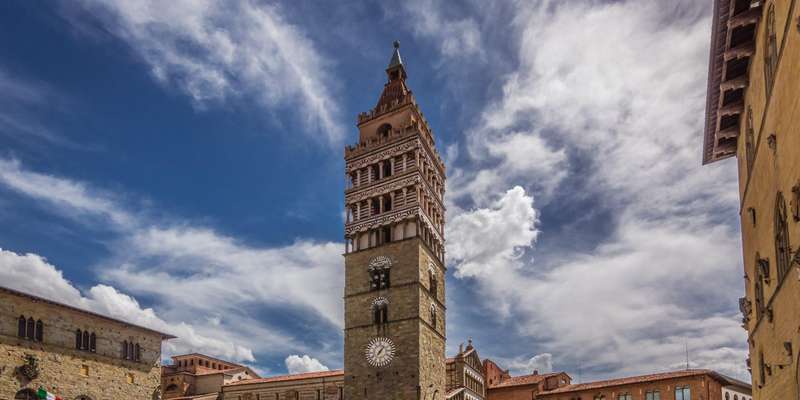- Home
- Useful Tips
- Exploring Pistoia's connection...
Many travelers overlook Pistoia's profound contributions to Renaissance medicine, missing a unique opportunity to walk through living history. While Florence and Siena dominate Tuscany's tourist itineraries, Pistoia quietly preserves extraordinary medical artifacts and apothecaries unchanged since the 15th century. Over 60% of visitors to Tuscany never discover these hidden treasures, according to regional tourism data, often due to limited information about where to find authentic experiences. The frustration of arriving to find crowded venues or missing key exhibits is common, especially during peak seasons when unprepared travelers waste precious vacation time in lines rather than exploring. For history enthusiasts and curious travelers alike, understanding Pistoia's medical legacy offers a rare glimpse into how Renaissance innovations shaped modern healthcare, presented in original settings that larger cities have long since modernized.


Why Pistoia became a Renaissance medicine hub
Pistoia's strategic position along medieval trade routes transformed it into an unexpected center for medical innovation during the Renaissance. Unlike larger cities that focused on art and architecture, Pistoia developed specialized expertise in herbal remedies and surgical techniques thanks to its access to rare ingredients from across Europe and the Mediterranean. The city's Ospedale del Ceppo, founded in 1277, became a pioneering medical institution where physicians experimented with new treatments documented in beautifully preserved codices. What makes Pistoia truly special is how these historical spaces remain intact – the 15th-century pharmacy at Spezieria di San Jacopo still displays original ceramic drug jars with handwritten labels, offering an authentic time capsule visitors won't find in more commercialized destinations. Local historians note that Pistoia's compact size allowed medical knowledge to spread quickly among practitioners, creating a concentrated hub of innovation that larger, more bureaucratic cities couldn't match.
Must-see medical history sites most tourists miss
Beyond the famous Ospedale del Ceppo facade, Pistoia hides several extraordinary medical history sites that even seasoned travelers overlook. The Museo della Sanità houses surgical instruments from the 1400s displayed in their original wooden cases, including surprisingly sophisticated scalpels and bone saws that demonstrate Renaissance advancements. A little-known gem is the Archivio Capitolare's collection of medical manuscripts, where visitors can see notes from physicians debating treatments for the Black Death. For an immersive experience, the Spezieria di San Fiorano maintains its 16th-century layout with drawers of dried herbs still labeled in Latin. Locals recommend visiting these sites mid-week when school groups are less likely to crowd the smaller spaces. Many are clustered near Piazza del Duomo, allowing you to efficiently explore multiple locations without wasting time crossing the city – a crucial advantage for day-trippers wanting to maximize their visit.
How to access restricted medical archives and libraries
Gaining entry to Pistoia's most exclusive medical collections requires planning that most visitors don't anticipate. While some archives like those at the Cathedral Library appear open to the public, their most valuable Renaissance medical texts often require advance permission. A little-known local secret is that the Biblioteca Forteguerriana offers monthly guided viewings of its prized anatomical drawings if you register with the tourism office at least two weeks prior. For independent scholars, the Archivio di Stato provides access to physician correspondence from the Medici era by presenting identification and research purposes. Those short on time can still see remarkable items through the Hospital Museum's rotating exhibits, which frequently display pieces from restricted collections. Remember that many institutions close for riposo (afternoon break), so morning visits are essential for efficient itinerary planning – a tip that saves most travelers from frustrating locked doors during prime exploration hours.
Decoding Renaissance remedies at local apothecaries
Pistoia's surviving Renaissance apothecaries offer a hands-on connection to medical history that textbooks can't match. At Farmacia Chiti, established in 1846 but maintaining centuries-old traditions, pharmacists demonstrate how physicians compounded remedies using antique mortars and scales identical to those in museum displays. The real magic happens when they explain the ongoing use of Renaissance-era herbal preparations – their famous 'acqua antiisterica' still follows a 1583 recipe for nervous ailments. For deeper insight, visit during September's Medicina nei Secoli festival, when local historians recreate diagnostic methods using urine analysis glasses and zodiac charts exactly as Renaissance doctors would have. These living history experiences reveal why Pistoia's medical legacy endures – not as dusty artifacts, but as traditions that still inform modern wellness practices in this remarkable Tuscan city.
